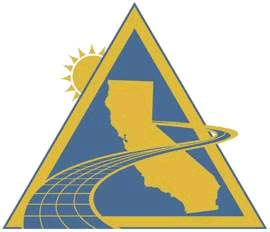|
|
California Central Valley Groundwater Modeling Workshop Proceedings and Presentations |
|
Central Valley Groundwater Modeling Workshop - July 10 - 11, 2008 Organized by Charlie Brush, DWR, and Norm Miller, LBL/UCB
Sponsored by:
|
|
Overview California’s Central Valley is currently home to over 6 million people, and generates over $20 billion in agricultural crops each year. An intricate surface water distribution system routes water from surrounding watersheds to the Central Valley, the Central Coast and Southern California. The Central Valley’s aquifers have historically provided water for agricultural and urban use, and are increasingly being used as a buffer for fluctuations in surface water supplies. Current scientific and management challenges include understanding the aquifer’s response to drought and climate change, protecting the quality of groundwater, limiting subsidence caused by groundwater pumping, and implementing aquifer storage and recovery programs. This workshop was a gathering of researchers, consultants, administrators and others interested in learning about how groundwater models have been applied to address scientific and resource-management questions in the Central Valley. The workshop followed the Computational Methods in Water Resources XVI International Conference, held in San Francisco July 6-10, 2008. Workshop presentations were developed to increase attendees understanding of the groundwater flow system at both the local and regional scales, and to foster discussion on future collaborations and sharing of models and data. The workshop began with a dinner gathering July 10th at Looney’s Barbeque in Berkeley. Dave Prudic of the original USGS Central Valley Regional Aquifer System Analysis team gave a presentation on the history of groundwater modeling in the Central Valley. The meaning of the term ‘groundwater model’ has changed over the years, from a set of painted wooden dowels representing well logs, to analog models created with resistors and capacitors, to the current digital computer models. On Friday, workshop attendees met at UC Berkeley to see twenty presentations on groundwater models developed for the Central Valley. The morning session included four groundwater flow models in the Tulare Basin and five in the San Joaquin River Basin. The afternoon session included four more models in the San Joaquin River Basin, three in the Sacramento River Basin, and closed with four presentations on Valley-wide modeling efforts. |
|
Proceedings of the California Central Valley Groundwater Modeling Workshop
|
|
Evening Presentation
History of Groundwater Models, Central Valley, California
Tulare Basin Presentations Ground water dating and flow-model calibration in the Kern Water Bank, California Laurent Meillier, Hugo A. Loaiciga and Jordan F. Clark (presentation not available)
Water management and estimation of groundwater pumping as closure to the water balance of a semi-irrigated agricultural basin: Tule River Basin (southern Tulare County)
Numerical groundwater flow model for the Kaweah Delta Water Conservation District, southern San Joaquin Valley, California
Integrated Modeling: An Analytical Tool for Integrated Regional Water Management Plan Development – Application to Kings Basin
San Joaquin Basin Presentations
High resolution groundwater models of the San Joaquin River riparian zone for evaluation of
surface water/groundwater interactions under alternate river flow regimes
Development of regional and nested local-scale ground-water models for study of the fate of
agricultural nitrogen, Merced County, California
Comparison of simulated travel time distributions and age tracer concentrations in samples from an alluvial fan aquifer, San Joaquin Valley, California
WESTSIM: Integrated groundwater/surface water, conjunctive use, agricultural drainages, and
wetland return flow simulation on the west-side of the San Joaquin Valley
Hydrogeosphere application in multi-scale hydrological/ecological processes in San Joaquin River Basin
HGS-CalSim: A tool to conjunctively and dynamically simulate hydraulic processes and multi-reservoir systems for evaluation of climate change impacts
San Joaquin County DYNFLOW model
City Wide Groundwater Modeling for Remediation and Management – City of Lodi Varinder S. Oberoi, Michael Chendorain, Patrick B. Hubbard, Richard Prima, Wally Sandelin, and Charles Swimley (presentation not available) Impact of climate change on crop water requirements, groundwater and soil salinity in the San Joaquin Valley, California Gerrit Schoups, Jan W. Hopmans, and Edwin P. Maurer (presentation not available)
Sustainable root zone salinity in the context of shallow perched water table, and attenuation:
Land retirement demonstration project in the west San Joaquin Valley
Sacramento River Basin Presentations
Applications of the Sacramento County Integrated Groundwater and Surface Water Model
Butte Basin IWFM model
SACFEM: A Land Use Based Transient Finite-element Groundwater Flow Model of the Sacramento Valley
Central Valley Presentations
Integrated Hydrologic Models in the Central Valley, California
Application of MODFLOW's Farm Process to California's Central Valley
Simulating the historical evolution of the Central Valley hydrologic flow system with the
California Central Valley Groundwater-Surface Water Model
California Central Valley Drought Scenario Sensitivity Analysis Using C2VSIM
|
